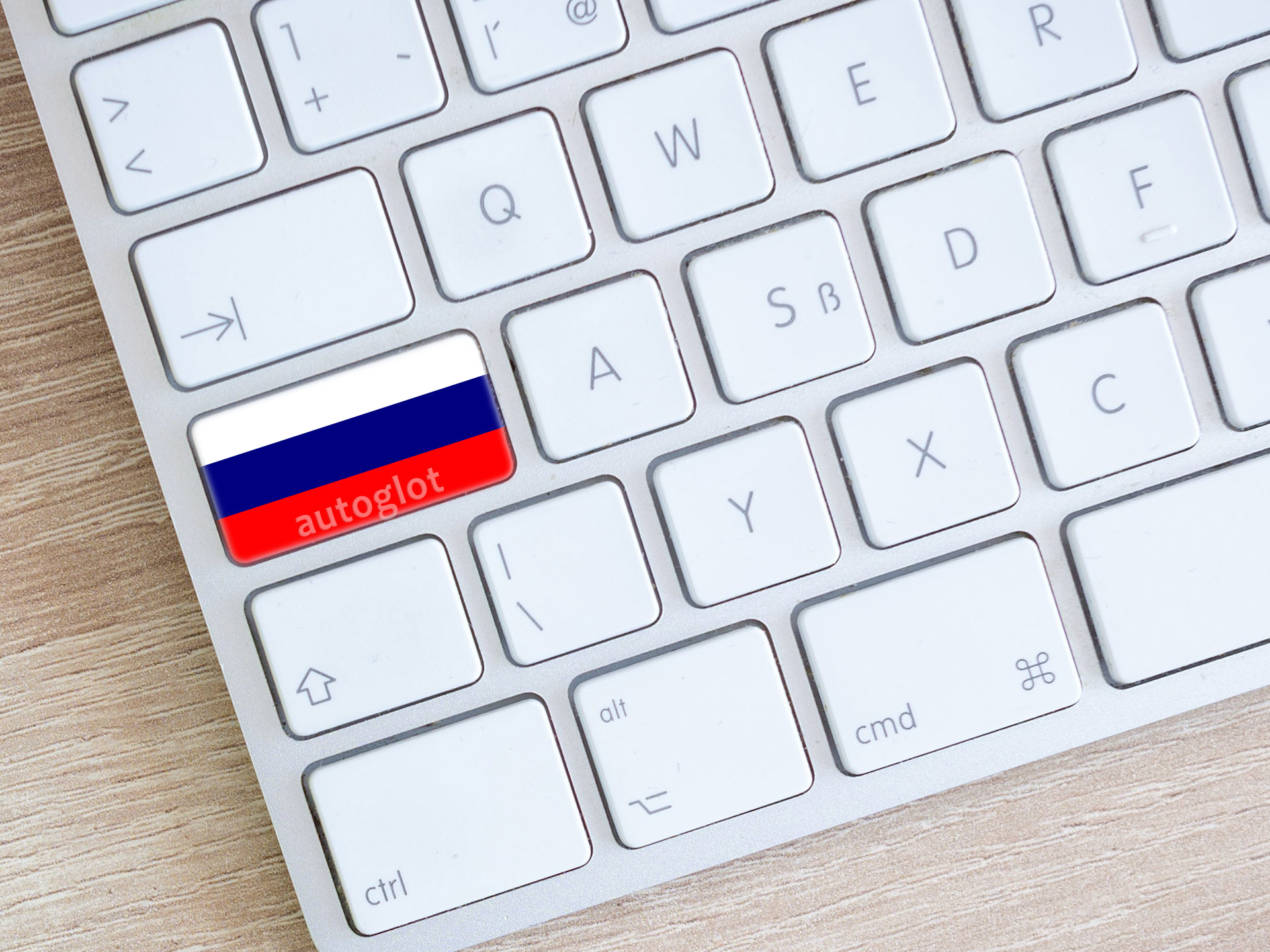
As businesses strive to reach a global audience, website translation plays a pivotal role in breaking down language barriers and fostering meaningful connections with diverse communities. Translating your WordPress site into Russian not only opens the door to a vast demographic, but also brings forth a multitude of benefits.
Why Multilingual Websites Should be Translated to Russian
Multilingual websites offer a competitive edge by expanding the reach of your content to a broader audience. In the case of Russian, a language spoken by millions worldwide, the potential for engagement and growth is substantial. Catering to the linguistic preferences of Russian-speaking users demonstrates a commitment to inclusivity and facilitates a deeper connection with this vibrant community.
Russian Language: Unlocking a Linguistic Tapestry
Russian, with its rich history and cultural significance, is one of the most widely spoken languages globally. Rooted in the Cyrillic script, the language boasts a distinct structure, vocabulary, and grammar. While mastering Russian may pose challenges for some, its prevalence makes it a worthwhile investment for businesses seeking to tap into the vast Russian-speaking audience.
Russian-speaking People: A Global Community
With a significant population of native speakers, Russian extends its influence beyond the borders of Russia itself. It is the official language in multiple countries and holds sway in regions where Russian-speaking communities thrive. Understanding the demographics and geographic distribution of Russian speakers is crucial for businesses aiming to tailor their content effectively.
Russian on the Internet: A Digital Imperative
The influence of the Russian language extends to the online realm, with a substantial presence on the Internet. Having a dedicated Russian version of your website is not just a matter of linguistic accommodation; it’s a strategic move to tap into the vast online community that engages with content in the Russian language. This foresight can significantly enhance your website’s visibility and impact in the digital sphere.
Russian Language: History and Structure
Russian, with its intricate linguistic tapestry, stands as one of the most captivating languages in the world. Rooted in a history that spans centuries, the Russian language has evolved to become a vehicle of cultural expression, scientific discourse, and international diplomacy. Understanding the nuances of this language is essential for anyone seeking to connect with the vast Russian-speaking audience.

History of the Russian Language: A Journey Through Time
The roots of the Russian language can be traced back to the East Slavic tribes that inhabited the European part of what is now Russia, Ukraine, and Belarus. Over the centuries, it absorbed influences from various linguistic traditions, including Greek, Latin, and Turkic languages. The standardization of the language gained momentum in the 18th century, propelled by literary giants like Alexander Pushkin and Leo Tolstoy.
Structure, Vocabulary, and Grammar: The Building Blocks of Russian Expression
Russian’s unique structure, employing the Cyrillic alphabet, adds a layer of distinctiveness to its visual and auditory aspects. The language is renowned for its intricate grammatical system, including six cases and a rich system of verb conjugations. While these elements may pose a challenge for learners, they contribute to the eloquence and precision with which thoughts can be articulated in Russian.
Ease of Learning and Communication: Navigating the Russian Linguistic Landscape
For those embarking on the journey of learning Russian, challenges may arise, but so do rewards. While mastering a new script and grammatical structure demands dedication, the language’s phonetic nature makes pronunciation more straightforward than in some other languages. The use of formal and informal language nuances adds depth to communication, allowing speakers to convey subtle shades of meaning.
Russian Literature and Culture: A Window into the Soul of the Language
To truly understand the Russian language is to appreciate its profound connection to literature and culture. Russian literature, renowned for its depth and philosophical exploration, provides insights into the collective consciousness of the Russian-speaking people. The works of Dostoevsky, Chekhov, and others not only showcase linguistic prowess but also offer a glimpse into the soul of the language.
Russian-speaking People: A Global Community
Beyond the borders of Russia, the Russian language resonates in the hearts and minds of a diverse global community. As one of the most spoken languages worldwide, Russian extends its influence far beyond its country of origin, creating a linguistic bridge that connects people across different nations and cultures.

Population that Speaks Russian: A Multimillion-strong Community
Russian boasts a vast number of native speakers, with estimates placing it among the top ten most spoken languages globally. The linguistic influence of Russian reaches across continents, making it a language of considerable significance in both Europe and Asia. This extensive reach underscores the importance of considering Russian in the global landscape.
Russian-speaking Countries: Beyond Russia’s Borders
While Russian is the official language of the Russian Federation, its influence extends to neighboring countries and regions that were once part of the Soviet Union. Nations such as Belarus, Kazakhstan, and Kyrgyzstan maintain Russian as a co-official or widely spoken language, reflecting historical ties and shared cultural heritage.
Countries Where Russian is an Official Language: A Symbol of Unity
Belarus, Kazakhstan, and Kyrgyzstan recognize Russian as an official language, emphasizing the language’s role as a unifying force among nations with intertwined histories and legacies.
Russian-speaking Communities: A Cultural Thread
Russian-speaking communities flourish in various parts of the world, creating vibrant pockets of culture and identity. In Israel, for example, Russian is spoken by a significant portion of the population, a testament to migration patterns and historical events that have shaped the global dispersion of Russian speakers.
Russian in Diplomacy and International Relations: A Language of Influence
The importance of Russian extends to the realm of international diplomacy. As a language spoken by millions and with a rich cultural heritage, Russian plays a role in shaping global discourse. Understanding the linguistic preferences of Russian-speaking populations is essential for businesses and organizations engaged in international relations.
Russian on the Internet: A Digital Imperative
On the Internet, the Russian language asserts its presence with vigor and influence. As millions of users navigate the digital landscape in search of information, entertainment, and services, the importance of having a Russian version of your website becomes increasingly apparent. Understanding the prevalence of Russian online is not merely a strategic move; it is a digital imperative for businesses seeking to broaden their reach and impact.

Widespread Presence of Russian on the Internet
Russian stands as one of the most widely used languages on the Internet, with a substantial number of users engaging in online content and services in their native language. This prevalence extends not only to websites originating from Russian-speaking countries, but also to global platforms that recognize the significance of catering to the linguistic preferences of diverse audiences.
Cultural Relevance and Localization: Key Considerations
Creating a Russian version of your website goes beyond linguistic accommodation; it reflects an acknowledgment of cultural nuances and preferences. Internet users, particularly those whose primary language is Russian, tend to engage more deeply with content that resonates with their cultural background. This cultural relevance is a powerful factor in establishing a meaningful connection with the target audience.
Search Engine Optimization (SEO) and Visibility
In the competitive digital landscape, visibility is key. Optimizing your website for search engines in the Russian language can significantly enhance its discoverability among Russian-speaking users. Search engines like Yandex, widely used in Russian-speaking regions, respond favorably to content presented in the Russian language, contributing to higher rankings and increased organic traffic.
E-commerce and Market Expansion: Tapping into Potential
For businesses involved in e-commerce, providing a Russian version of your website is a strategic step toward tapping into the vast potential of the Russian-speaking market. Easier navigation, seamless transactions, and localized content contribute to a positive user experience, fostering trust and increasing the likelihood of conversion.
User Experience and Engagement: Building Connections
The user experience is at the heart of successful online engagement. By offering a Russian version of your website, you not only facilitate ease of navigation but also demonstrate a commitment to inclusivity. This, in turn, enhances user satisfaction and encourages prolonged engagement with your content or services.
How to Translate a WordPress Site to Russian?
In the expansive world of WordPress websites, catering to diverse audiences often involves the crucial step of translation. For those looking to tap into the vast Russian-speaking demographic, translating your WordPress site into Russian is not only a strategic move but a gateway to a broader online presence.

Here, we explore major methods of translation and spotlight the Autoglot WordPress translation plugin as a standout tool for effortlessly reaching Russian audiences.
Major Methods of Translating WordPress Sites to Russian
- Manual Translation: The traditional approach involves hiring professional translators or using in-house linguistic expertise to manually translate each element of your WordPress site into Russian. While effective, this method can be time-consuming, resource-intensive, and may require ongoing updates.
- Machine Translation: Leveraging machine translation services, such as Google Translate or Bing Translator, is a quicker alternative. However, the output may lack the nuanced accuracy and cultural sensitivity required for a seamless user experience.
- WordPress Translation Plugins: Specialized translation plugins streamline the process by automating translations and offering features like multilingual content management. These plugins often provide a balance between efficiency and quality, allowing website owners to reach new audiences with minimal effort.
Autoglot WordPress Translation Plugin: Your Gateway to Effortless Translation
Among the array of WordPress translation plugins, Autoglot stands out as a powerful tool tailored for website owners seeking an efficient and accurate translation process. This plugin employs advanced machine translation technology to automatically translate your WordPress site into Russian, eliminating the need for manual intervention.
Key Features of Autoglot WordPress Translation Plugin
- User-Friendly Interface: Autoglot offers an intuitive interface, making it accessible to users with varying levels of technical expertise. The installation and activation process is streamlined, ensuring a hassle-free experience.
- Automatic Language Detection: The plugin detects the language of your content and automatically translates it into Russian, saving time and effort. This feature is particularly beneficial for websites with dynamic and frequently updated content.
- Customization Options: Autoglot allows users to fine-tune translations, ensuring that the output aligns with the intended tone and context. This customization feature adds a layer of control, allowing website owners to maintain the authenticity of their content.
- Seamless Integration: The plugin seamlessly integrates with your existing WordPress setup, minimizing disruptions and ensuring a smooth transition to a multilingual website.
Step-by-Step Guide to Translating a WordPress Site to Russian with Autoglot
Embarking on the journey to translate your WordPress site into Russian using the Autoglot WordPress translation plugin is a straightforward process that can significantly expand your online reach. Below is a step-by-step guide to help you seamlessly integrate this powerful tool, ensuring a smooth transition to a multilingual website.
Step 1: Install and Activate Autoglot WordPress Translation Plugin
- Begin by navigating to the WordPress dashboard and selecting the “Plugins” tab.
- Search for “Autoglot” and click on the “Install Now” button.
- Once installed, activate the plugin to initiate the translation capabilities.
You may also download Autoglot directly from the official WordPress plugins repository.
Source
Step 2: Register on Autoglot Control Panel
- Upon activation, you’ll need to register on the Autoglot Control Panel.
- This step is essential for accessing the machine translation service that powers the plugin.
- Provide the required information and follow the registration prompts to create your account.
Autoglot Control Panel lets you control your translation expenses, track usage and order new translation packages.
Source
Step 3: Configure Autoglot Plugin Settings
- Navigate to the Autoglot settings in your WordPress dashboard.
- Here, you can configure various aspects of the translation process, including language preferences and customization options.
- Adjust the settings to align with your website’s content and your target audience.
Step 4: Choose Russian Among Languages
- In the Autoglot settings, designate Russian as one of the target languages for translation.
- This ensures that your WordPress site’s content will be automatically translated into Russian, allowing you to cater to the linguistic preferences of Russian-speaking users.
Step 5: Check Results of Automatic Translation
- With the Autoglot plugin configured, visit different pages of your WordPress site to observe the automatic translation in action.
- Assess the accuracy and coherence of the translated content, making note of any areas that may require manual customization for precision.
Step 6: Fine-tune Translations (Optional)
- Autoglot provides customization options for users who wish to fine-tune translations manually.
- This step is particularly useful for ensuring that the translated content includes specific images and media files, links to localized resources and URLs in Russain.
Step 7: Monitor and Update
- Regularly monitor your translated content to ensure ongoing accuracy and relevance.
- Autoglot’s automated processes can be complemented by periodic manual reviews, allowing you to stay in control of your website’s multilingual content.
By following these steps, you can leverage the Autoglot WordPress translation plugin to effortlessly translate your WordPress site into Russian. This streamlined process not only saves time and resources but also empowers you to connect with a broader audience in a language they understand and appreciate.
Source
Navigating the Challenges and Embracing the Benefits
The decision to translate your WordPress site into Russian opens up a realm of opportunities, accompanied by both challenges and substantial benefits. Understanding the nuances of this endeavor is crucial for website owners seeking to establish a meaningful online presence in the vast Russian-speaking landscape.
Challenges of Translating WordPress Sites to Russian
One of the primary challenges lies in maintaining linguistic and cultural accuracy. Automated translation tools, while efficient, may occasionally overlook subtle nuances, requiring vigilant oversight to ensure precision. Additionally, the dynamic nature of language poses an ongoing challenge, necessitating periodic reviews to align with evolving linguistic trends.
Benefits of Embracing Multilingualism
The advantages, however, far outweigh the challenges. Translating your WordPress site into Russian positions your content to resonate with a diverse and expansive audience. The cultural relevance achieved through language localization fosters a deeper connection, enhancing user engagement and trust.
By employing the Autoglot WordPress translation plugin, you not only streamline the translation process but also ensure a user-friendly and efficient experience. The plugin’s automated features, coupled with customization options, strike a balance between efficiency and control, addressing the challenges associated with manual translations or generic machine translations.
Source
Boost Your Website with Autoglot
In conclusion, challenges and benefits of translating your WordPress site into Russian require a strategic approach and the right tools. The Autoglot WordPress translation plugin emerges as a powerful ally in this journey, offering a user-friendly interface, automatic language detection, and customizable features.
For website owners seeking to effortlessly connect with the expansive Russian-speaking audience, Autoglot presents a compelling solution. Elevate your website’s accessibility, expand your reach, and foster meaningful connections by incorporating Autoglot into your multilingual digital strategy. Seize the opportunity to engage with the diverse Russian-speaking community and amplify the impact of your online presence.



